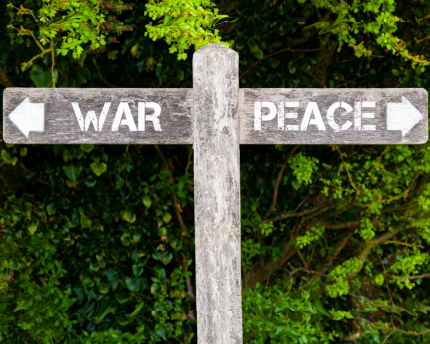Can North and South Korea have peace?

After the meeting, the two leaders released a joint statement pledging to work toward a nuclear free peninsula. This wasn’t the first time that efforts have been made to bring about better relations between North Korea and South Korea. There have been two other summits that led to hopeful announcements for the news media and photos of grinning leaders. But success has been fleeting so far. Here is the rundown:
The summit in Pyongyang, June 13-15, 2000: To set the stage, Kim Dae-jung, then president of the Republic of Korea (South Korea), had taken office two years earlier promising a "Sunshine Policy,” an attempt to engage with North Korea. The three fundamental principles were “no tolerance of provocations from the North, no intention to absorb the North, and the separation of political cooperation from economic cooperation,” according to the U.S. State Department website. “Private sector overtures would be based on commercial and humanitarian considerations.” Kim's policy set the stage for the inter-Korean summit held in Pyongyang June 13-15, 2000.
The summit, which involved North Korean leader Kim Jong Il, father of the current leader, produced a joint declaration in which the two governments agreed to “resolve the question of reunification independently and through the joint efforts of the Korean people."
In the months that followed, there were more meetings between officials. Also, the governments opened liaison offices in the truce village of Panmunjom. And “on August 15, in accordance with the summit's Joint Declaration, the two sides sent delegations of 100 members of separated families to each other's capitals for reunion meetings,” the State Department recounted.
But world leaders remained skeptical of North Korea's intentions. In January 2002 President George W. Bush named North Korea as a part an "axis of evil." During his State of the Union address, Bush said, "North Korea is a regime arming with missiles and weapons of mass destruction, while starving its citizens."
That year, a sea battle broke out between North and South Korea when two North Korean patrol vessels accompanying fishing boats entered South Korea's territorial waters, according to a 2002 account in The Guardian. See the story in The Guardian.
The summit at Pyongyang Oct. 2-4, 2007: This summit involved Roh Moo-hyun, then president of South Korea, in a meeting with Kim Jong Il of North Korea. The leaders agreed “not to interfere in the internal affairs of the other and agreed to resolve inter-Korean issues in the spirit of reconciliation, cooperation and reunification,” according to the Declaration on the Advancement of South-North Korean Relations, Peace and Prosperity Oct. 4, 2007, found on the U.S. Institute of Peace website. See the complete agreement on the institute’s website.
Despite hopes for this agreement, relations between the two countries remained strained. And in 2009 navies for the two countries skirmished after a North Korean vessel entered South Korean waters. See the article from 2009 in The Christian Science Monitor.
Related:
Backgrounder: The Demilitarized Zone
If you wish to comment, like us on Facebook and tell us what you think.

